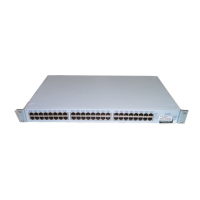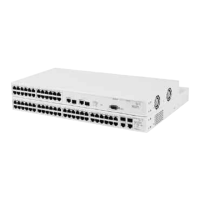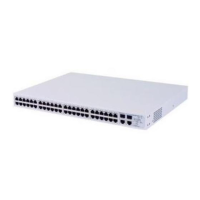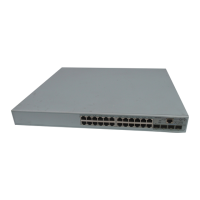VLANs and Your Switch 61
■ VLANs help to control traffic
With traditional networks, congestion can be caused by broadcast
traffic that is directed to all network devices whether they require it or
not. VLANs increase the efficiency of your network because each
VLAN can be set up to contain only those devices that need to
communicate with each other.
VLANs and Your
Switch
Your Switch provides support for VLANs using the IEEE Std 802.1Q-1998.
This standard allows traffic from multiple VLANs to be carried across one
physical link.
The IEEE Std 802.1Q-1998 allows each port on your Switch to be placed
in:
■ Any one VLAN defined on the Switch.
■ Several VLANs at the same time using 802.1Q tagging.
The standard requires that you define the following information about
each VLAN on your Switch before the Switch can use it to forward traffic:
■ VLAN Name — This is a descriptive name for the VLAN (for example,
Marketing or Management).
■ 802.1Q VLAN ID — This is used to identify the VLAN if you use
802.1Q tagging across your network.
The Default VLAN A new or initialized Switch contains a single VLAN, the Default VLAN.
This VLAN has the following definition:
■ VLAN Name — Default VLAN
■ 802.1Q VLAN ID — 1 (if tagging required)
All the ports are initially placed in this VLAN1, which is the default VLAN
and enables you to access the management software of the Switch over
the network.
Communication
Between VLANs
If the devices placed in a VLAN need to communicate with devices in a
different VLAN, a router or Layer 3 switching device with connections to
both VLANs needs to be present. Your Switch will act as a Layer 3
switching device provided that it has an IP interface on each VLAN. See
Chapter 11
for information about IP routing.

